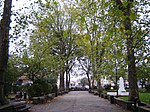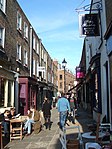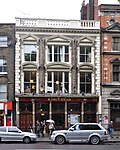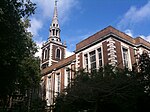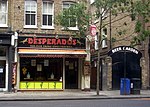Slug and Lettuce, Islington
19th-century architecture in the United Kingdom19th-century establishments in EnglandBuildings and structures completed in the 19th centuryBuildings and structures in IslingtonGrade II listed pubs in London ... and 3 more
Pub stubsPubs in the London Borough of IslingtonUse British English from May 2014

The Slug and Lettuce is a Grade II listed public house at 330 Upper Street and Islington Green, Islington, London.It was built in the mid-late 19th century, and was known as "The Fox" until 1984. It was the first Slug and Lettuce, which is now one of the UK's leading pub chains.
Excerpt from the Wikipedia article Slug and Lettuce, Islington (License: CC BY-SA 3.0, Authors, Images).Slug and Lettuce, Islington
Islington Green, London Highbury (London Borough of Islington)
Geographical coordinates (GPS) Address External links Nearby Places Show on map
Geographical coordinates (GPS)
| Latitude | Longitude |
|---|---|
| N 51.53664 ° | E -0.10316 ° |
Address
Fox on the Green (The Slug)
Islington Green 1
N1 2XH London, Highbury (London Borough of Islington)
England, United Kingdom
Open on Google Maps


